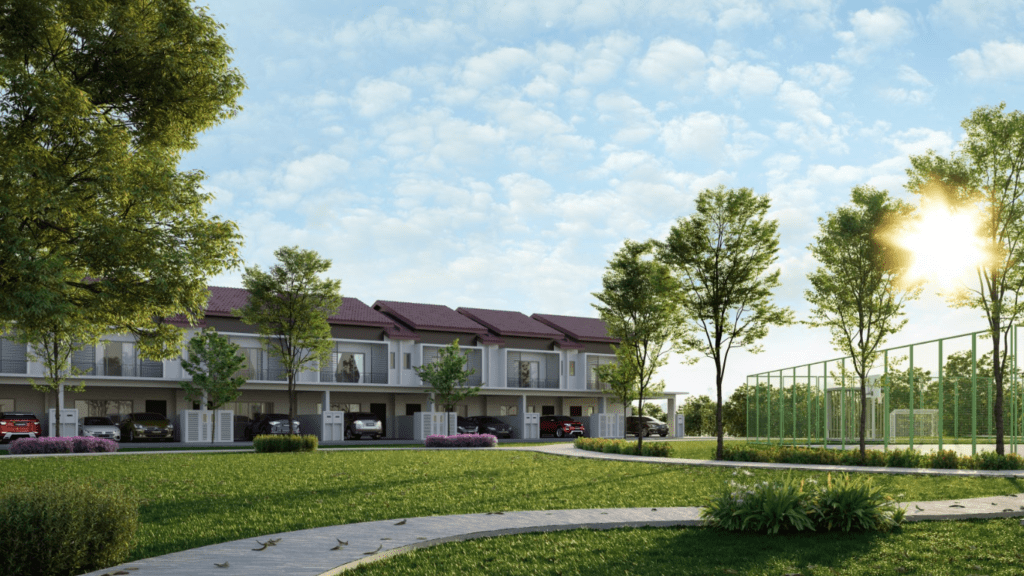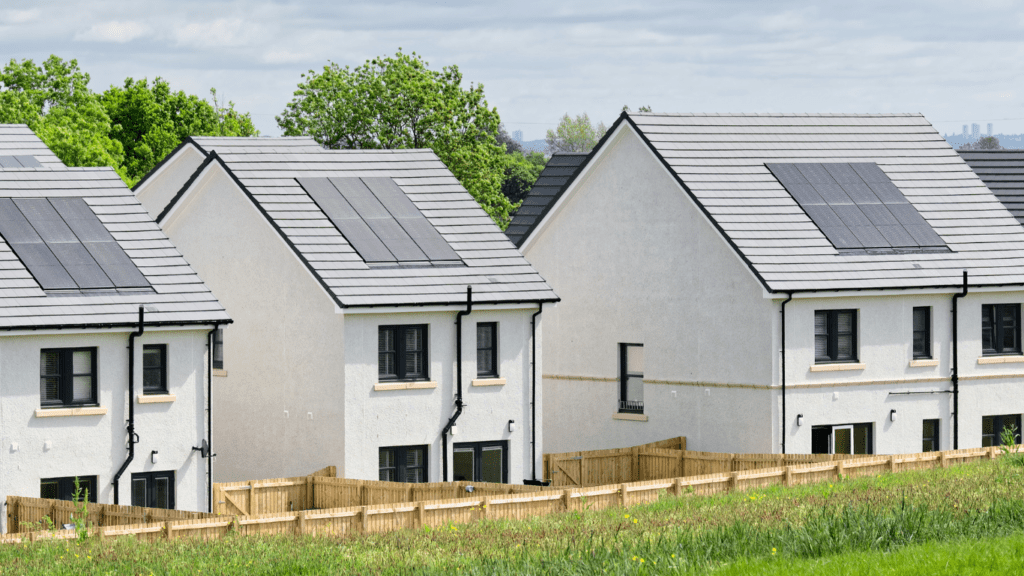Understanding Green Homes
Green homes incorporate sustainability and energy efficiency in their design and construction. These homes focus on reducing environmental impact and promoting healthier living.
Definition and Features
Green homes refer to residential properties designed with eco-friendly principles. Key features include:
- Energy Efficiency: Use of renewable energy sources, such as solar panels, and energy-efficient appliances.
- Sustainable Materials: Building materials sourced from recycled or renewable resources.
- Water Conservation: Systems that reduce water usage, like low-flow fixtures and rainwater harvesting.
- Indoor Air Quality: Non-toxic paints and materials that improve air quality inside the home.
- Smart Technology: Integration of smart home systems to manage energy use effectively.
Benefits of Green Homes
Green homes offer numerous advantages that make them attractive to buyers:
- Lower Utility Bills: Energy-efficient systems reduce electricity and water costs.
- Healthier Indoor Environment: Better air quality and non-toxic materials lead to fewer health issues.
- Higher Resale Value: Properties with green certifications draw higher market values.
- Reduced Carbon Footprint: Lesser reliance on non-renewable resources decreases environmental impact.
By addressing both environmental and personal benefits, green homes align with the growing preference for sustainable living solutions in the real estate market.
Current Trends in the Real Estate Market
Green homes increasingly dominate the real estate market. Several specific trends drive this shift.
Rise in Consumer Awareness
Consumers recognize the benefits of sustainable living. Many prioritize homes with energy-efficient appliances, solar panels, and sustainable building materials. A 2021 survey by the National Association of Home Builders (NAHB) found that 51% of buyers considered energy efficiency a must-have feature. Other popular features include water-saving fixtures and non-toxic finishes.
Government Policies and Incentives
Governments promote green homes through policies and incentives. Tax credits, rebates, and grants encourage energy-efficient upgrades. For example, the U.S. federal government offers a tax credit of up to 26% for solar panel installations through 2022. Local governments also provide rebates for energy-efficient appliances and sustainable landscaping. These incentives make green homes more affordable and attractive to buyers.
Factors Driving the Growing Demand
The push for green homes stems from several critical factors impacting consumer choices and market trends.
Environmental Concerns
Buyers increasingly prioritize reducing their carbon footprints. Green homes offer sustainable features like energy-efficient windows, solar panels, and low-emission building materials. According to the International Energy Agency, buildings account for around 28% of global energy-related CO2 emissions, emphasizing the need for greener alternatives.
Long-term Cost Savings
Homeowners look for ways to cut costs over time. Green homes can significantly lower utility bills through improved insulation, efficient HVAC systems, and low-flow water fixtures. The U.S. Department of Energy estimates that energy-efficient homes can save homeowners about 25% on their energy bills, making green homes both economically and environmentally attractive.
Technological Advancements
Advances in technology boost interest in green homes. Smart home systems now integrate with energy management solutions to optimize consumption. Innovations in renewable energy, like newer, more efficient solar panel models, make it easier and more cost-effective to sustain eco-friendly lifestyles. The growing availability of these technologies drives buyer demand, as they’re more accessible and convenient than ever before.
Challenges in Meeting the Demand
Meeting the rising demand for green homes isn’t without its hurdles. Several challenges impact the ability to supply eco-friendly properties.
High Initial Costs
For developers, high initial costs pose a critical challenge. Green building materials and technologies, though cost-saving in the long term, require significant upfront investment. Solar panels, energy-efficient windows, and advanced HVAC systems elevate initial expenses. Retrofitting existing homes to meet green standards also involves substantial financial input. These costs can deter both developers and potential buyers from opting for green homes despite their benefits.
Limited Availability of Green Materials
A limited supply of green materials further complicates the effort to meet demand. Eco-friendly materials, ranging from sustainably sourced lumber to energy-efficient insulation, aren’t always readily accessible. Scarcity drives up costs and delays construction timelines. Sourcing these materials adds complexity to project planning and execution. For instance, finding enough recycled steel or low-VOC paints to complete multiple projects at scale can become a logistical challenge.
Regulatory Hurdles
- Regulatory hurdles also create significant obstacles.
- Variances in local, state, and federal regulations can complicate the approval process for green construction projects.
- Inconsistent building codes and rigid zoning laws often slow down development.
- Developers might face lengthy permit processes or strict compliance requirements that add time and cost.
- Adapting to these regulations while striving to maintain green building standards requires careful navigation and strategic planning.
Meeting these challenges demands innovative solutions and collaborative effort across the industry.
Moving Forward: The Future of Green Homes

The momentum for green homes shows no signs of slowing. Pioneering innovations and emerging technologies are set to redefine sustainable living, while sustainable building practices continue to evolve.
Innovations and Emerging Technologies
Breakthroughs in technology are advancing green homes. Energy storage solutions, like Tesla’s Powerwall, enhance efficiency by storing solar energy for later use. Smart thermostat systems, like Nest, optimize energy consumption, adjusting temperatures based on occupancy. Integrating renewable energy sources, such as solar panels and wind turbines, further reduces dependency on non-renewable energy.
3D printing technology introduces new construction methods. Companies like ICON use giant 3D printers to create homes with minimal waste, reducing both costs and environmental impact. Home automation systems, including lighting and security, contribute to energy savings and reduce a home’s carbon footprint.
Sustainable Building Practices
Adopting sustainable building practices is crucial in real estate. Using recycled and repurposed materials helps minimize environmental impact. Builders, for example, increasingly opt for reclaimed wood and recycled steel in their projects.
Focused on water efficiency, innovations like rainwater harvesting systems and greywater recycling reduce water usage. Green roofs, which involve planting vegetation on rooftops, improve insulation and manage stormwater.
Energy-efficient designs maximize natural light and ventilation. Builders are incorporating passive solar design principles to reduce heating and cooling needs. Incorporating triple-glazed windows and advanced insulation further boosts energy efficiency.
Consistent updates to building codes drive sustainability. Local governments and regulatory bodies continue to tighten energy codes, pushing for higher efficiency standards in new builds. This ensures the future of green homes aligns with environmental goals and regulatory mandates.


 Michael Matherne has been instrumental in the development of Villa Estates Luxe, leveraging his extensive background in real estate and digital marketing to shape the platform's success. His strategic insights have been crucial in curating the latest news and market trends, ensuring that users receive timely and relevant information tailored to their needs. Michael has also been pivotal in enhancing the overall user experience, implementing innovative features that make navigating the site seamless. His commitment to providing high-quality content and fostering a community of informed buyers and investors has significantly contributed to Villa Estates Luxe’s reputation as a trusted resource in the luxury villa market.
Michael Matherne has been instrumental in the development of Villa Estates Luxe, leveraging his extensive background in real estate and digital marketing to shape the platform's success. His strategic insights have been crucial in curating the latest news and market trends, ensuring that users receive timely and relevant information tailored to their needs. Michael has also been pivotal in enhancing the overall user experience, implementing innovative features that make navigating the site seamless. His commitment to providing high-quality content and fostering a community of informed buyers and investors has significantly contributed to Villa Estates Luxe’s reputation as a trusted resource in the luxury villa market.